Best cheap cycling glasses: Look good without breaking the bank
Nine brilliant cycling glasses for the budget-conscious rider

Cycling glasses are a staple of any rider's wardrobe. I've honestly lost count of the number I've tested now, it's easily over 50, and the very best made it into our guide to the best cycling glasses. If you're here though, it means you don't want to shell out hundreds to shield your eyes from the sun, wind, and rain.
Luckily for you, thanks to trickle-down tech, there are a load of really excellent cycling glasses that won't break the bank. Everything in this guide has an RRP of under £60 (approximately $75 at current rates) and all will stand you in good stead. Many are also frequently discounted, making for some absolute bargains.
You can go even cheaper, but I've stuck to pairs that are actually good, with large, protective lenses and features that mimic those higher up the price bracket.
The best cheap cycling glasses you can buy today
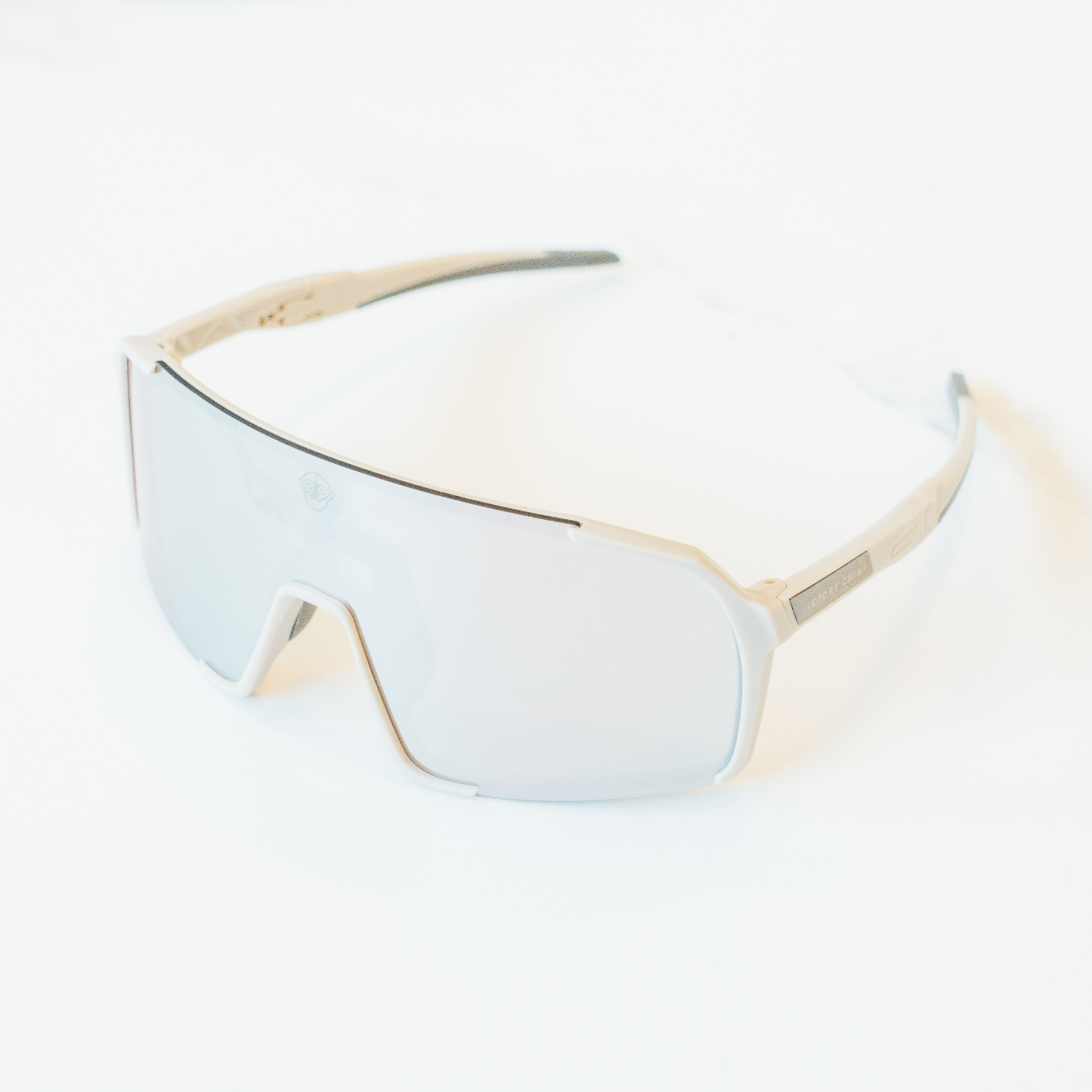
+ Myriad of included lenses
+ Look great
+ Sturdy
- Wide nose piece
For the price there's very little to fault. Not only do they look great, fit well, and feel sturdy, but you get a tonne of included lenses. Included are a mirrored lens, a photochromic one, a clear one, and a polarised one, plus a prescription insert should you need it. It's everything you could ever need if you want a really decent pair of cycling glasses that won't break the bank. My only critique is that the nose piece is a little wide, and there isn't an included narrower option, but at this price that isn't astounding.

+ Used by pros
+ Brilliant coverage
- No adjustment
If you want to emulate the pros on a budget then these are the glasses for you. Used by the Decathlon-AG2R squad they genuinely feel like a much more premium set of shades. The coverage is excellent, the frameless construction means your eye line is unobstructed, and the lens is thick enough so they grip the face well and don't feel insecure. There's only one lens, so you're less covered for changeable conditions, but in the sun and even in moderately low light they perform well. There's no adjustability anywhere though, but that's not uncommon for this price point.
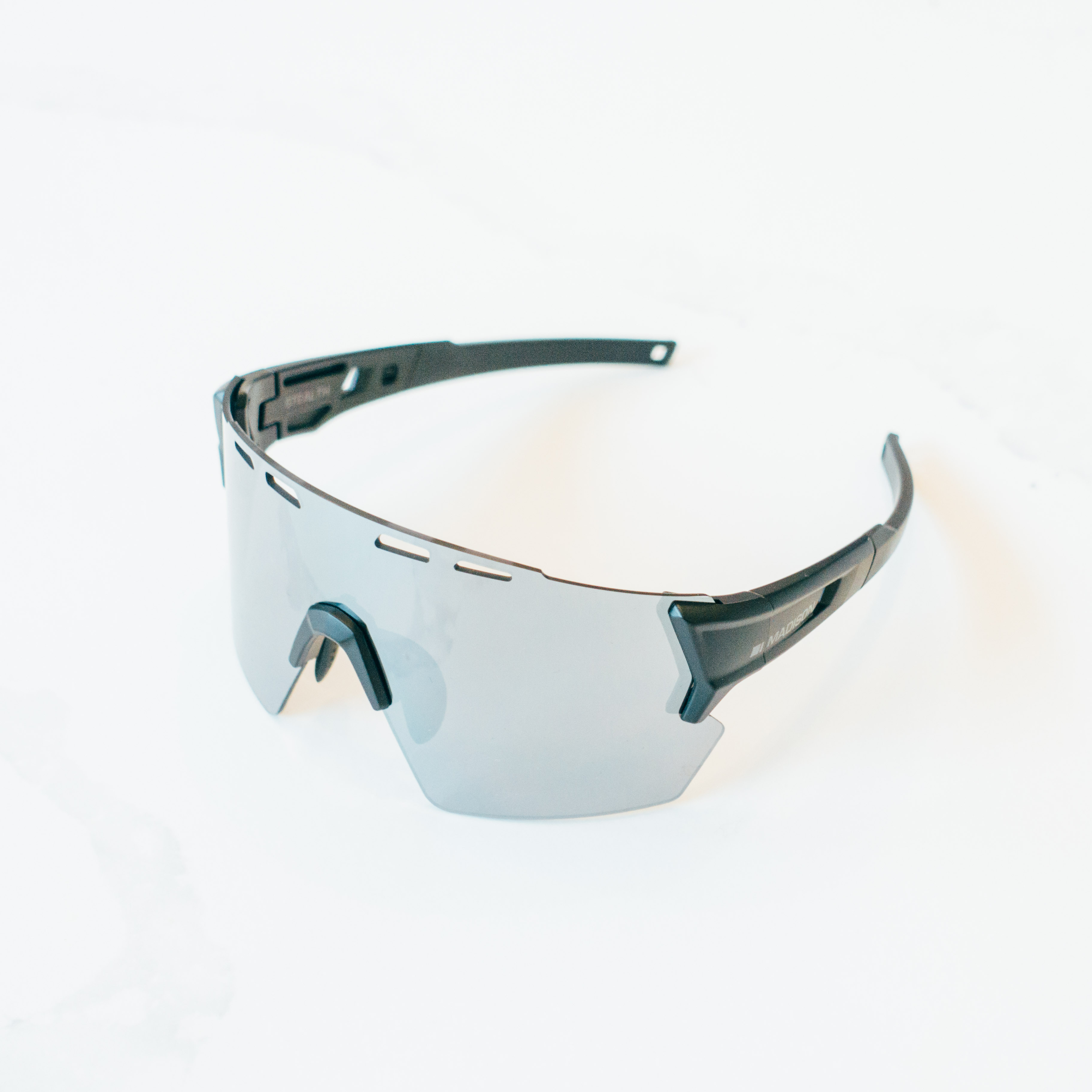
+ Vented lens
+ Adjustable nose
- Arms not rubberised
The Madison Stealth is the tallest lens of the bunch, so if you want maximum coverage then this is a great place to start. It also has an adjustable nosepiece so it'll fit a wide variety of faces, and while the arms aren't rubberised, they are heavily curved and so do grip the head well. The lens is also vented, which comes in handy, if you're a particularly steamy rider, to help them resist fogging up. As with many in this guide, the lenses aren't swappable, but with their often discounted price, these can be an absolute steal.
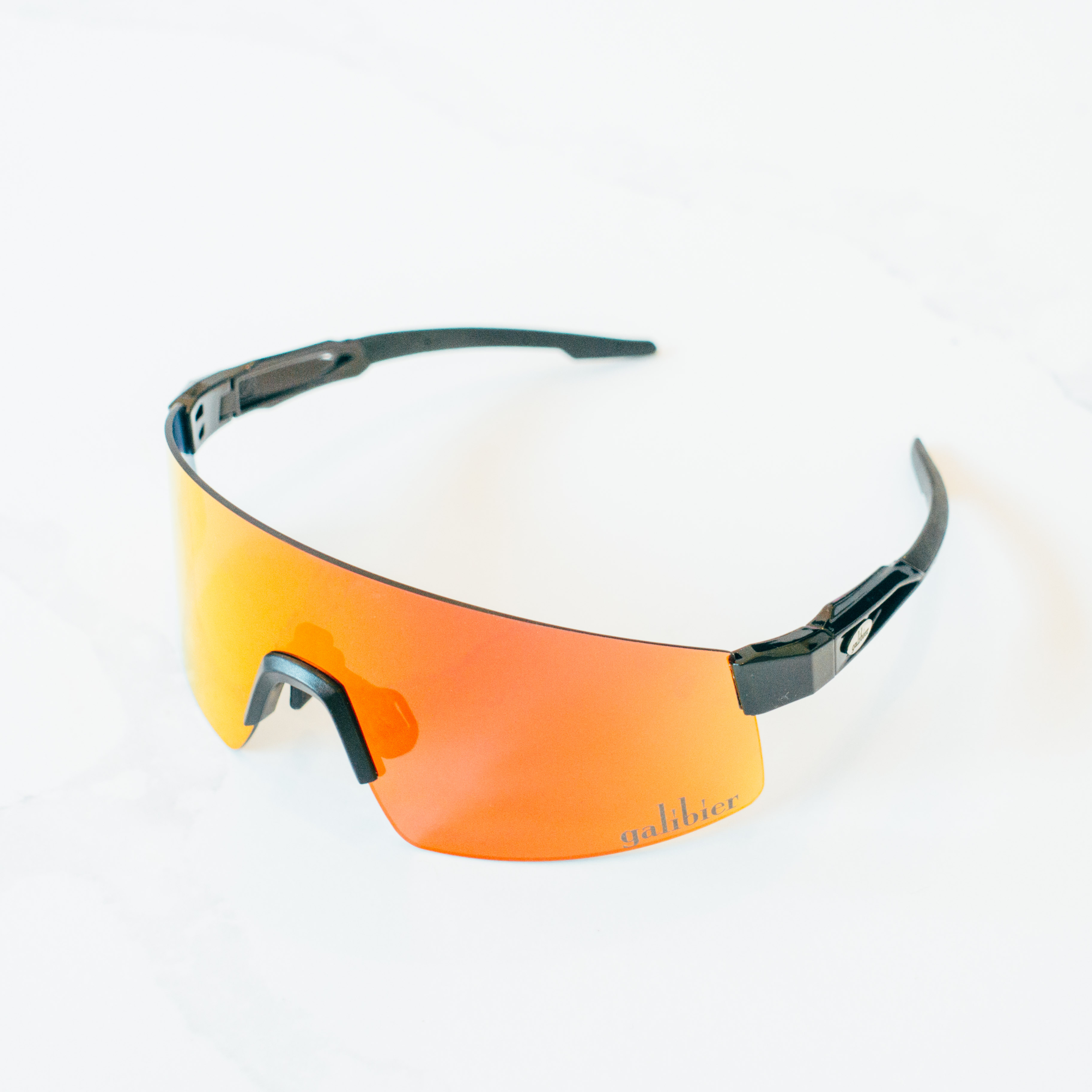
+ Very grippy
+ Sit high; good for aggressive positions
- Narrow arms and nose can be uncomfy
The Galibier Regale Ultra offers up a giant field of view, along with an adjustable nose and very grippy arms. The point of difference between them and others is that they sit higher on your face, meaning that if you're in an aggressive position they will be better suited for you as you'll effectively be looking more 'up'. If you're riding in a more upright way then you may end up looking at the bottom of the lenses. The arms and nose are pretty tenacious, but not wide and so can be a little uncomfy. The lens has a lot of flex, so will suit wider heads, too.
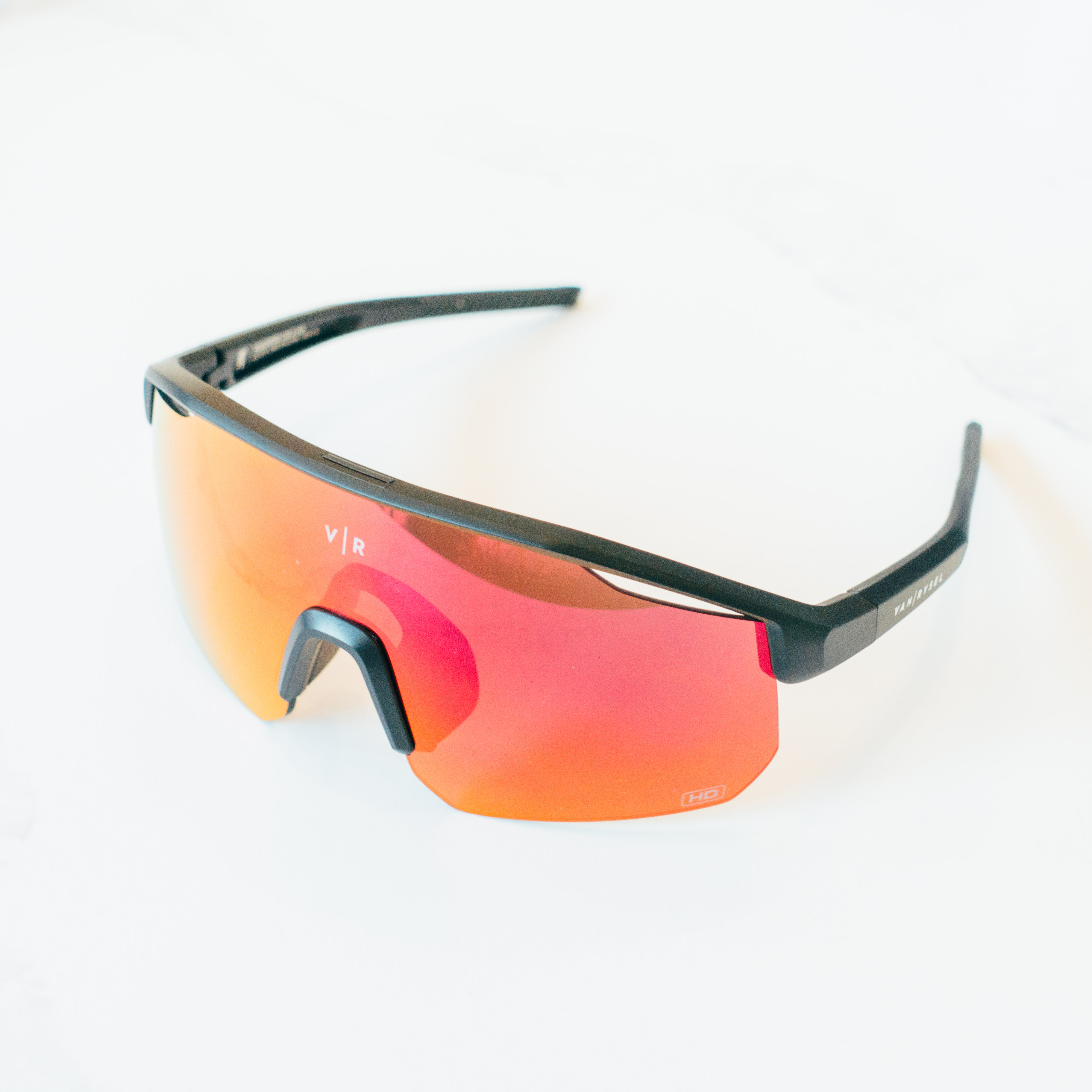
+ Quality construction
+ Smaller size
- No Adjustability
There has been an arms race in cycling glasses, even at the budget end, for ever bigger lenses. If you've got a smaller face then you can often find that these giant specs will swamp you. That's where the RoadR 900 HD from Van Rysel comes in. The small form is complimented by a half-frame, and really good arm and nose grippers, meaning they're both super comfy and stay put, plus they're constructed in a way that matches more premium options. The only drawback to my mind is no adjustment in the nosepiece.
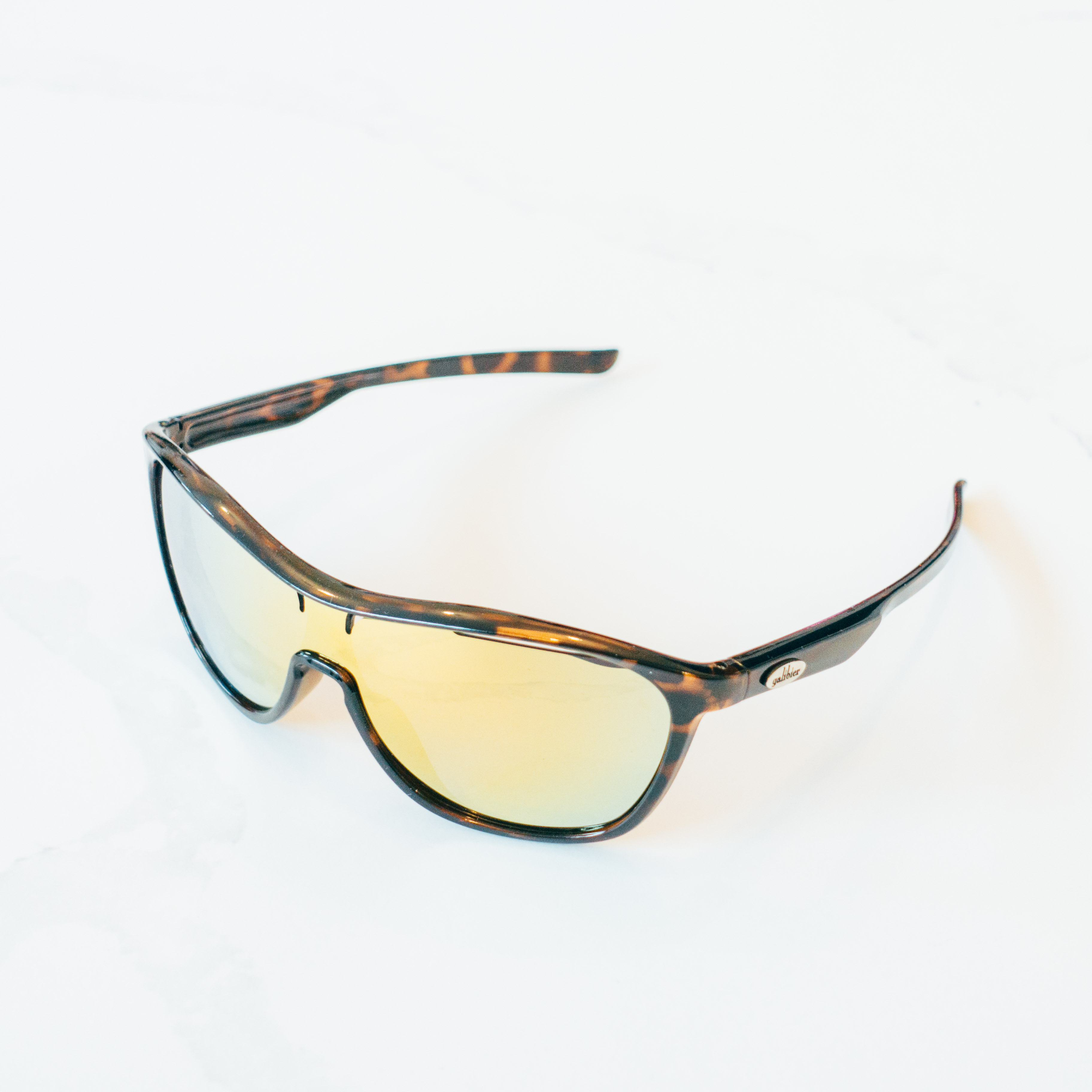
+ Classic looks
+ Off-bike utility
- No grippers
Maybe you don't want a pair of cycling glasses that look like a giant reflective slab. Well, try the Galibier Regale then. They have decent, vented lenses, but in a form that doesn't scream 'cyclist'. You could happily wear them off the bike and nobody would bat an eye. While the arms and nose have no grippers, the full-frame design means they are very sturdy and grip well enough, though when sweaty they could come unstuck. If you're doing a vintage event like l'Eroica, they'd fit right in, too.
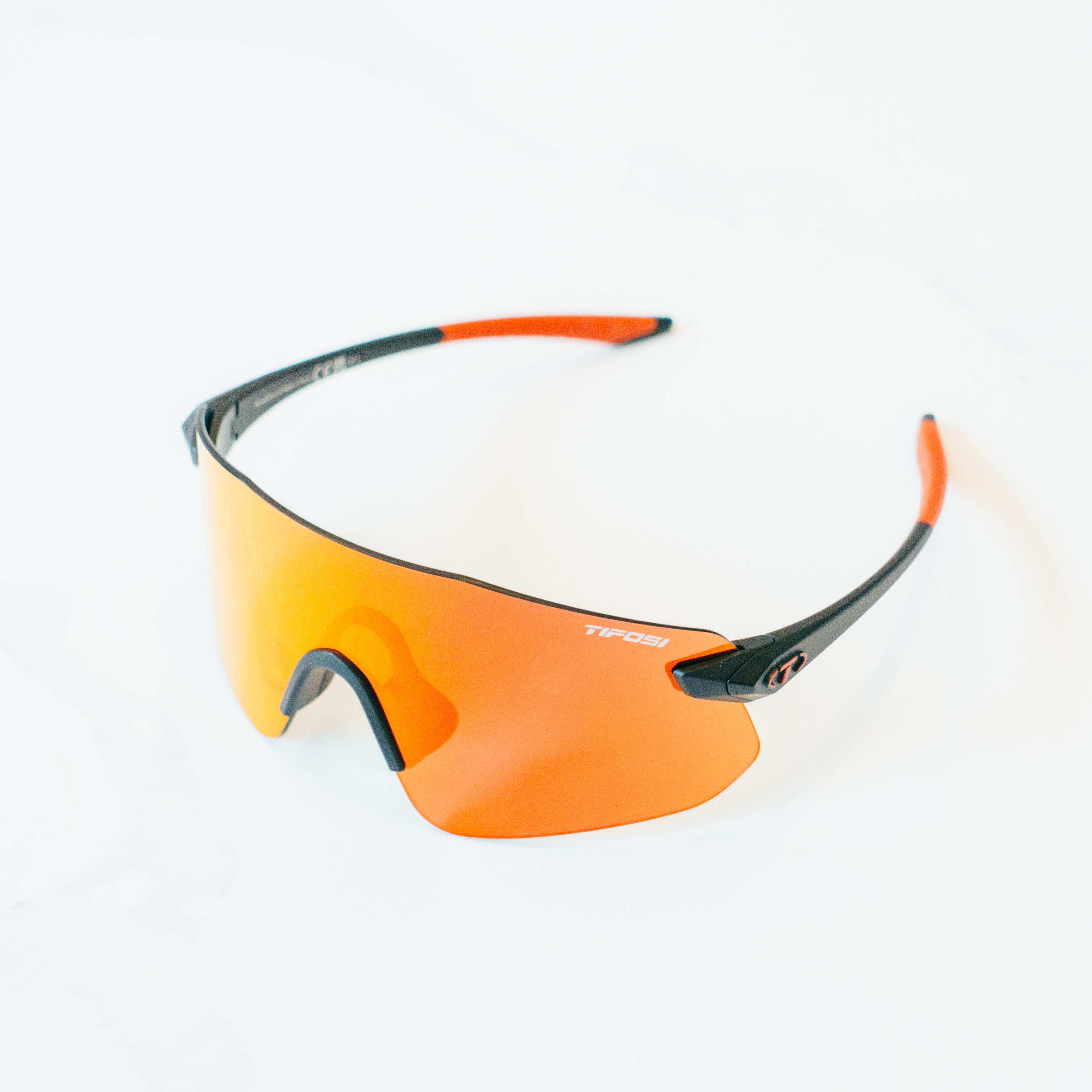
+ Smaller form
+ Stiff lens
- Materials feel lower quality
The Vogel SL from Tifosi again take a very similar form factor to many in this guide, but they are noticeably smaller than the options from Madison. They're certainly unobtrusive on the face, and while the lenses aren't interchangeable there are four options on offer covering a wide range of conditions.
My criticisms are minimal, but even among their budget compatriots the materials of the arms feel a little cheaper.
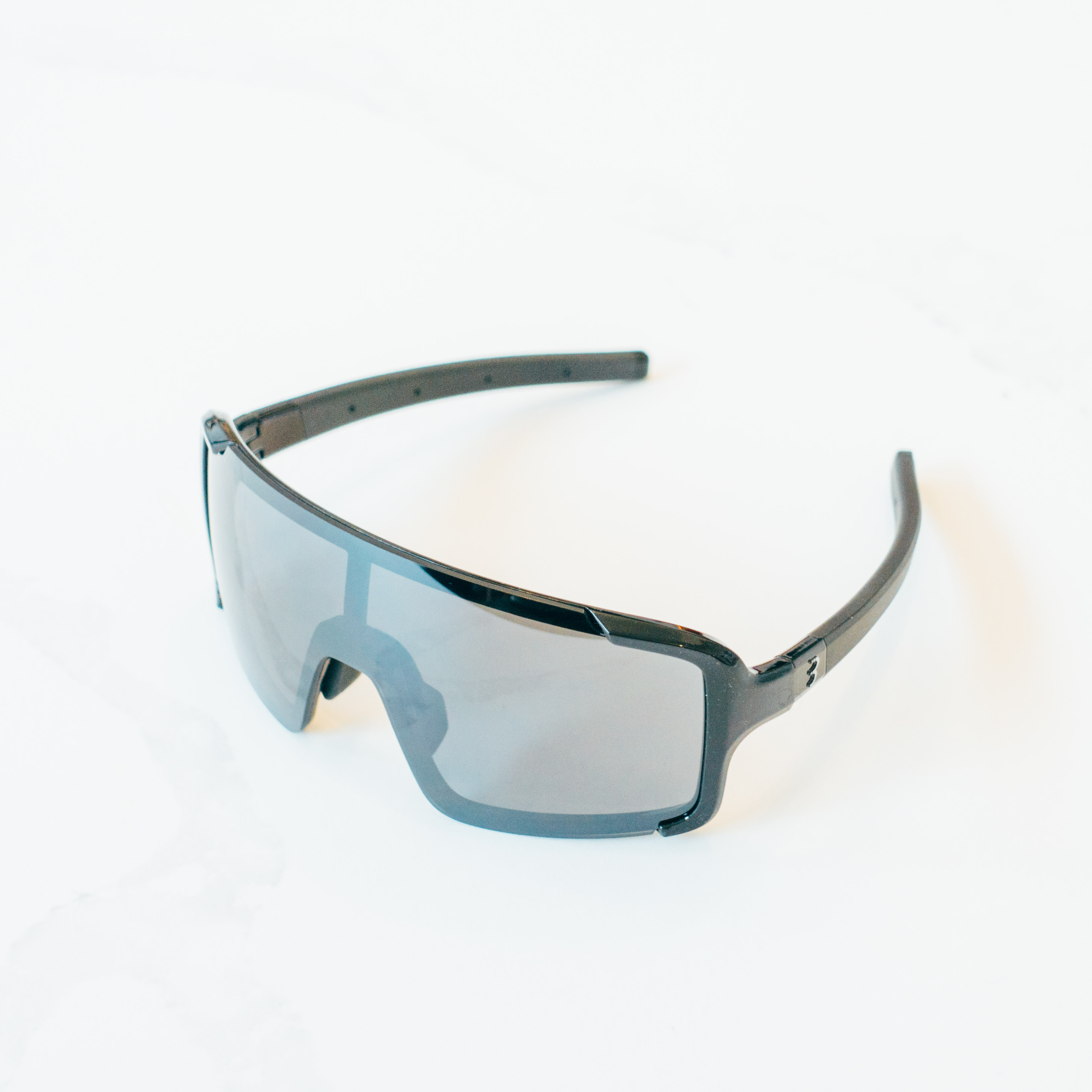
+ Super grippy
+ Very comfy
- Chunky frame in eye line
What sets the BBB Chester apart is the comfort and grip. The nose is adjustable, the pads are wide, and the arms are flexible and wrapped in their entirety in grippy plastic. They, too, are wide, and so never feel like they cut into the side of your head. Combined with the chunky frames they feel the most solid of the bunch. The frames also offer the only real drawback, though; as the lenses are a little smaller than many and the frame is quite chunky, the rims do sit in your eye line at times.
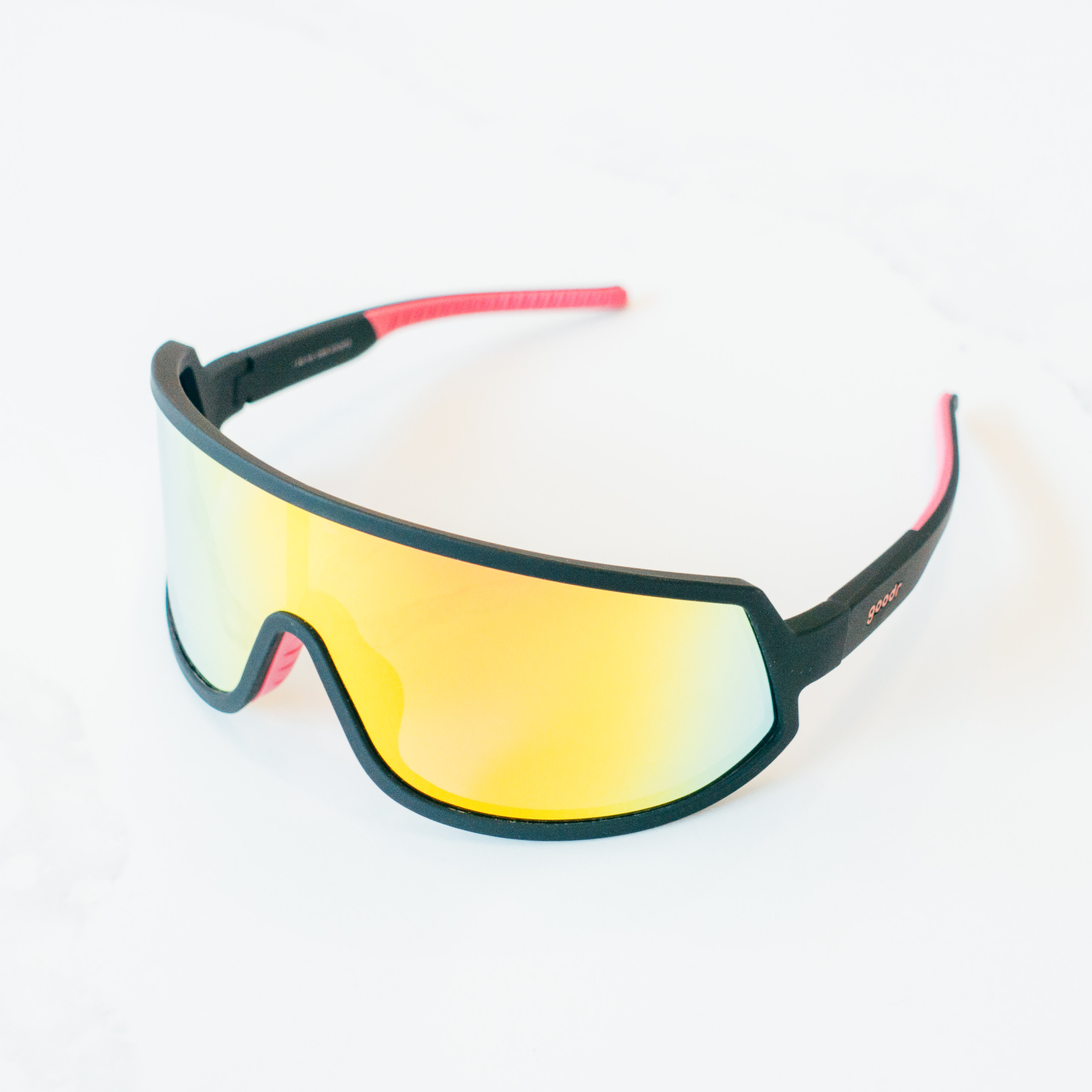
+ Soft touch frames
+ Many bright colours
- Polarised lenses not always a benefit
If you want something that's going to stand out then the Wrap G from Goodr is for you. The soft-touch finish to the frames feels far more premium than the price would suggest, and with colourway names such as "I do my own stunts" and "extreme dumpster diving" you can tell they're all going to be loud and proud.
The lenses do have a noticeable colour shift when you move your vision, but they're decent quality for the price. Polarisation is great, but bear in mind it can make it harder to see standing water and can interfere with screens sometimes too.
How to choose the best cheap cycling glasses
There are a lot of cheap options out there in the world of cycling glasses, so how do you sort the wheat from the chaff? Well, every pair in this guide I'd be happy to use myself, but if you're stuck between options then I've tried my best to answer any questions you might have below.
Are cycling glasses worth it?
Over not wearing anything at all? Yes. Over wearing normal sunglasses? Also yes. Cycling glasses look a little odd, especially modern giant monolens options, but for a relatively small price you'll find your eyes are far better protected from the sun, and almost more importantly from wind and spray. You'll see better and therefore ride more safely.
Why are cycling glasses so expensive
Hopefully the ones in this guide aren't, but it's a fair question when you have some models costing $400.
As well as having to meet UV blocking regulations, cycling glasses at all price points have to stay put when you're sweaty, over rough ground sometimes, and provide an unadulterated and ideally distortion-free field of view. Plus, they need to weigh as little as possible. There's a lot more that goes into them compared to a standard pair of fashion sunglasses.
What's the difference between cheap and expensive cycling glasses?
More expensive options do the same job, but everything is a little better. They tend to grip better, be more comfortable, weigh less, and be made to a higher standard. Most importantly though, the lenses are often superior.
Modern, high performance cycling lenses are usable over a vast array of conditions, with my favourites (Oakley Prizm Road) useable in bright sunlight through to dusk.
Cheaper lenses are less multi-purpose, but to counter this, many also come with a spare clear lens. The Victory Chimps that came out on top in this guide come with not one, but three spare lenses.
We've covered this topic in more depth, so check out our cheap vs expensive cycling glasses feature for more.
What lens colour do I need?
Each brand will have different colours for different conditions, so it's not as simple as red=sunny. Check the individual model details, but as a general rule red and gold mirrored lenses are the darkest, for the sunniest days, grey lenses are more all-purpose, and orange-tinted lenses are better in low light.
Many modern lenses, even at the budget level, combine an orange base tint with a less transmissive mirror coating to contrast darker lenses and make them more useable over a wider range of conditions.
Why are cycling glasses so big?
The bigger the lens the greater your field of view is, to put it simply. Once you've tried a whopping lens for riding it's hard to go back, and you'll start to notice when frames, or lens edges sit in your eyeline.
The larger lens also means that wind is less likely to bother your eyes, which comes in really handy when you're speeding down a descent - you don't want watery eyes there, that's for sure.
Be aware, if you have a small face (like I do) then really bog glasses ar emore likely to start to foul on the brim of your helmet, which can be really annoying.
How do we test cheap cycling glasses?
I'm lucky in that, as well as having a slew of cheap options to test comparatively, I also have a whole host of more premium options to compare against. Fit, field of view, and comfort are my main priorities, and so making sure these all play nicely with my face, as well as my helmets is a key part of testing.
Get The Leadout Newsletter
The latest race content, interviews, features, reviews and expert buying guides, direct to your inbox!
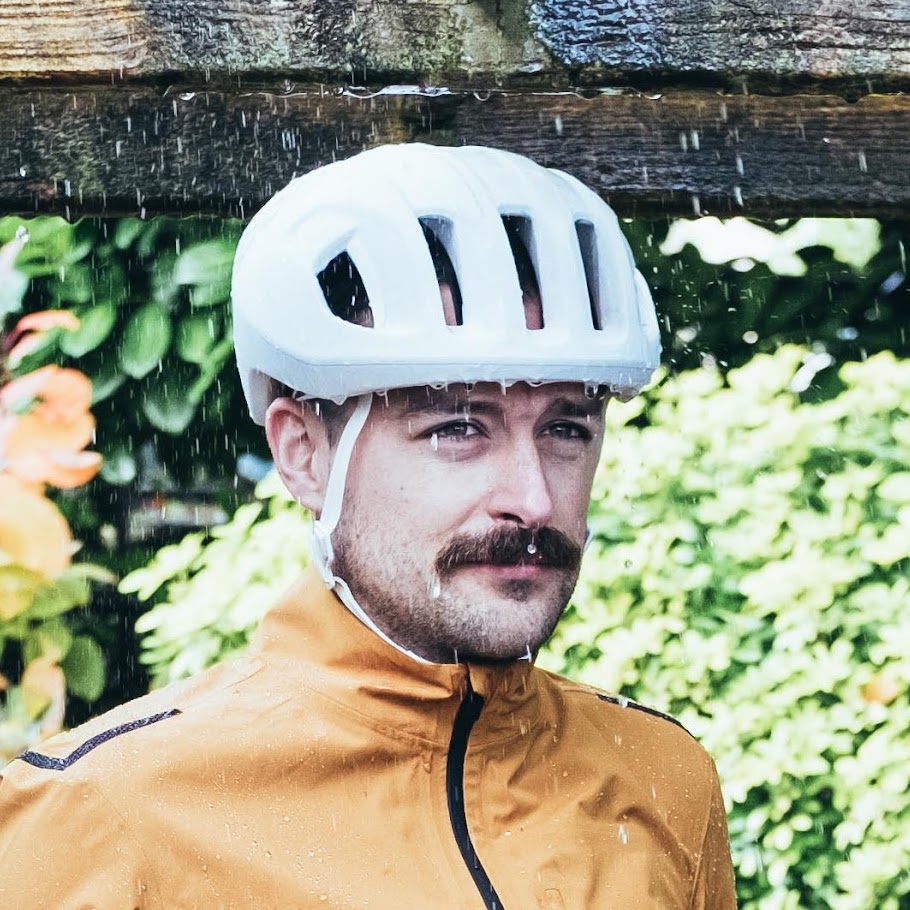
Will joined the Cyclingnews team as a reviews writer in 2022, having previously written for Cyclist, BikeRadar and Advntr. He’s tried his hand at most cycling disciplines, from the standard mix of road, gravel, and mountain bike, to the more unusual like bike polo and tracklocross. He’s made his own bike frames, covered tech news from the biggest races on the planet, and published countless premium galleries thanks to his excellent photographic eye. Also, given he doesn’t ever ride indoors he’s become a real expert on foul-weather riding gear. His collection of bikes is a real smorgasbord, with everything from vintage-style steel tourers through to superlight flat bar hill climb machines.